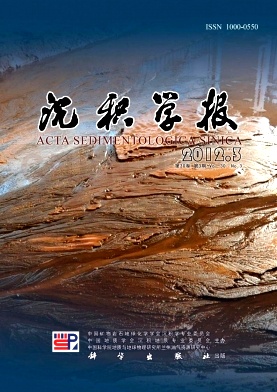Records and Plaeoenvironmental Implications from the Shelf of the Northern South China Sea since the MidHolocene
- Publish Date: 2012-06-10
-
Key words:
- South China Sea /
- MidHolocene /
- sedimentary environment /
- paleoclimate /
- /
- /
Abstract: High resolution records as lakes, peats, speleothems are reported to study the hydrological exhibition of 4.2 ka BP event in China in recent years. The terrigenous clastic matter in continental shelf could reveal sedimentary environment evolvement and paleoclimate. Sediment grain size, clay mineral, major elements, and benthic foraminifera of the Core C069 (113 49' E, 21 15' N, length: 2.1 m), which is from inner shelf of the northern South China Sea, have been investigated to reveal sedimentary environment evolvement and paleoclimate. The results indicate that sediments became finer and well from bottom to top. The frequency distribution curves of grain size in the lower segment (1.1~2.1 m) are poorly sorted with bimodal distribution, which display the strong hydrodynamic condition. However, in the upper segment (0~1.1 m) after 4.4 ka, the sediments have single peak frequency distribution curves. The coarse sediments derived from the Pearl River. The clay mineral assemblage consists dominantly of illite, lesser abundance of kaolinite and chlorite, with scare smectite. Kaolinite of the northern South China Sea is dominartly originated major origin from the Pearl River, predominant illite and chlorite from Taiwan, and principal smectite from the Luzon islands. The content of kaolinite decreases from 27% (1.1~2.1 m) to 18% (0~1.1 m), and illite crystallinity and illite chemistry index decrease similarily. The upper segment with more illite displays that more contribution of illite from Taiwan carried by surface currents, result in lower illite crystallinity and chemistry index. The results suggest that clay mineral assemblages in the inner shelf of the northern South China Sea are mainly controlled by provenance supply and downcore records do not bear contemporaneous paleoclimatic features. The benthic foraminifera dominant species in the lower segment are Ammonia becarii and Ammonia dominicana, which lived in brackish environment where the water was influenced by Pearl River diluted water. However, the benthic foraminifera dominant species changed with Cibicidoides subhaidingarii, Ammonia compressituta in the upper segment, which lived in normal shallow water environment. MgO/Al2O3 ratio increased from bottom to top due to the less terrigenous clastic matter transported to inner shelf of the northern South China Sea in extreme drycold after 4.2 ka. The lower segment sediments contain higher kaolinite content; lower MgO/Al2O3 ratio, with benthic foraminifera dominant species lived in brackish environment where the water was influenced by Pearl River diluted water in the Holocene Megathermal. However, the upper segment sediments contain lower kaolinite content, higher MgO/Al2O3 ratio in the upper segment, displaying that less Pearl River's contribution in extreme drycold time since 4.2 ka.
| Citation: | Records and Plaeoenvironmental Implications from the Shelf of the Northern South China Sea since the MidHolocene[J]. Acta Sedimentologica Sinica, 2012, 30(3): 556-564. |






 DownLoad:
DownLoad: